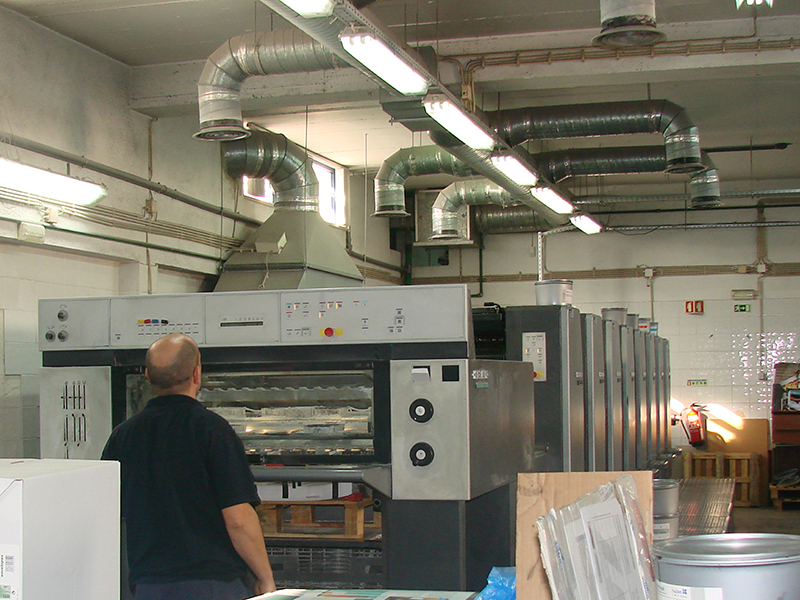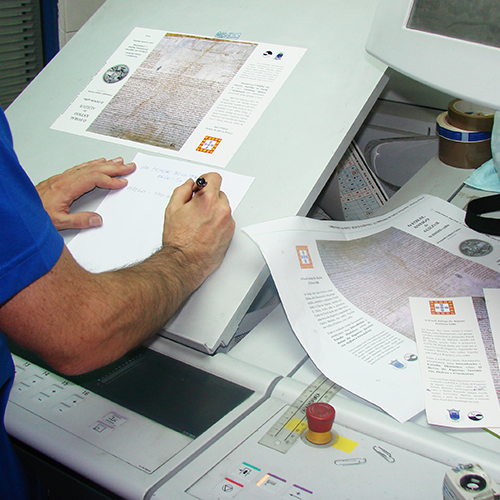
Heldelberg 74 running
The offset printing process permits a very good printing quality, as well as a great production speed. The technology has been constantly updated, with alcohol mixing to the dampening system water and the computerization of operations. Today, with the Computer to Plate (CTP) process, the printing plates are etched with laser precision and the digital color data from the graphic files are sent to the printer, tuning the inking system automatically.

Before the print run, color and print quality are controlled in a command panel. With every new tuning new copies are printed and examined to check the results. Even when the print run is under way, copies are taken out periodically to control.
To print a work four or more times is naturally tiresome. To avoid it, there are the multiple color printers, really several offsets in tandem with a common paper feeding and output. Our bigger printer, the Heidelberg 74, has eight colors, meaning eight successive offset bodies. It can print in the same pass the four colors of the front side of a print sheet end then the four colors of the back. It is also the one with the largest printing area – about 74×52 cm – and the faster, reaching the 14,000 copies per hour.
The other Heidelberg, the 52, has about half the printing area – 52×37 cm – and five colors. It can print four colors plus gold, four colors plus silver, four colors plus a direct color from the Pantone® catalog, four colors and printed UV varnish. Those four colors are usually the standard ones – cyan , magenta , yellow and black , but they can be any other required combination, usually from the Pantone® catalog. However, to print in the back a new run is necessary.
Sometimes, documents must be numbered, as with accounting forms. One of the ways to achieve that is with mechanical numerators embedded in the printer. Another of the offset printers, the GTO, has that function.
Offset printing remains the queen of the big runs and quality. Eventually, as with everything in printing, it will be superseded by a more advanced technology, but that substitution is not imminent.